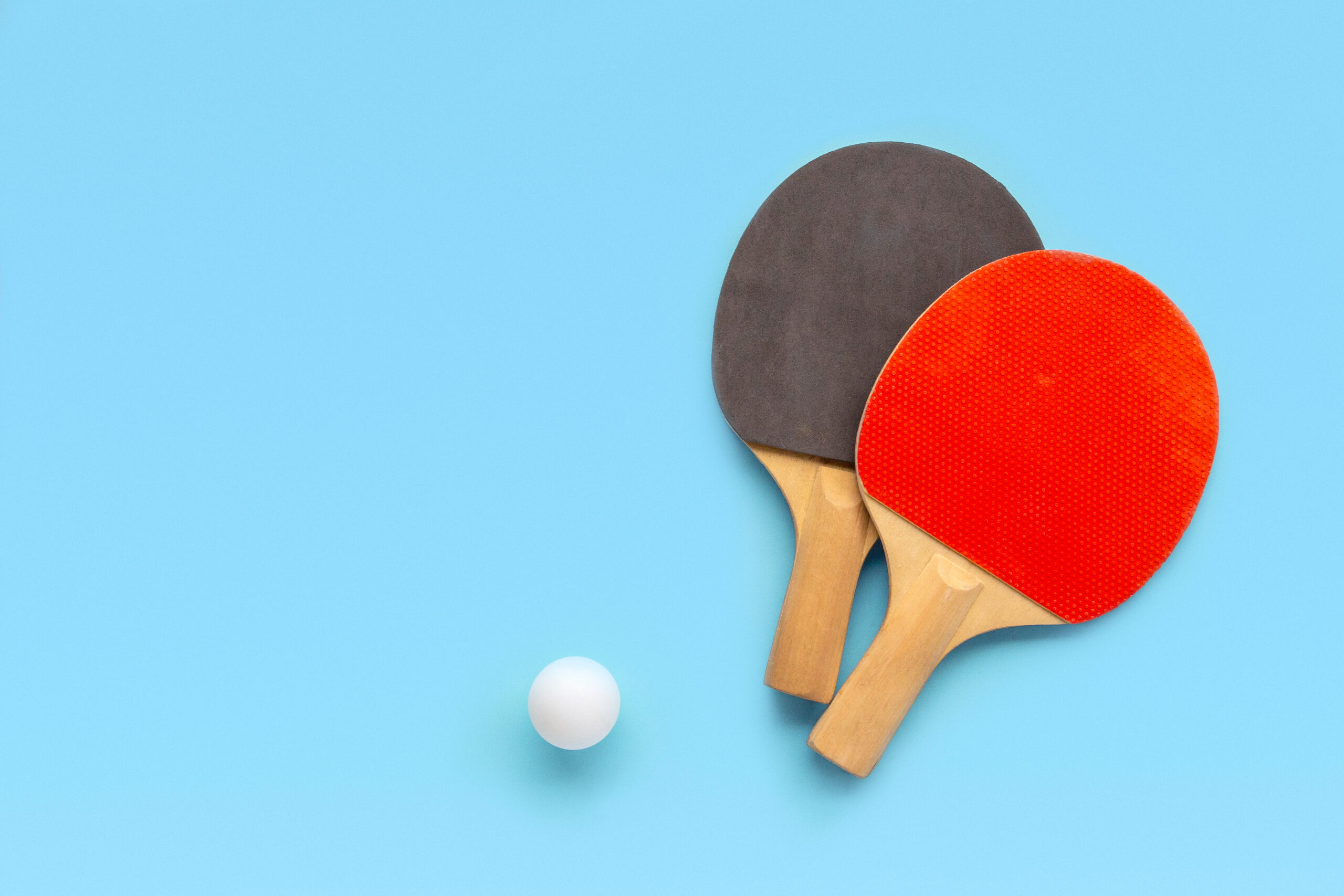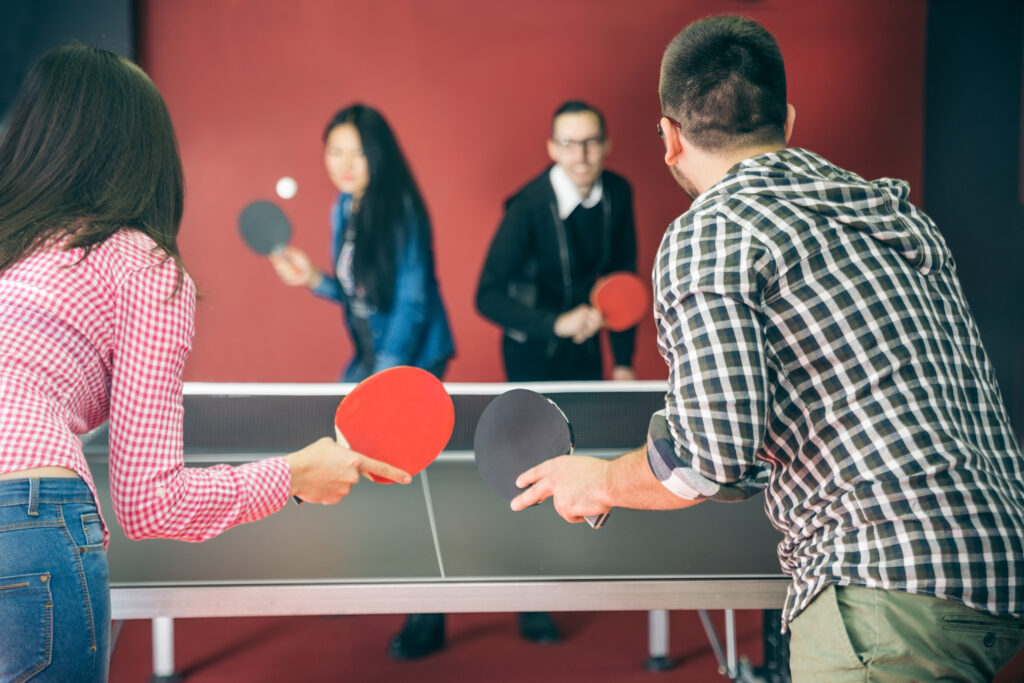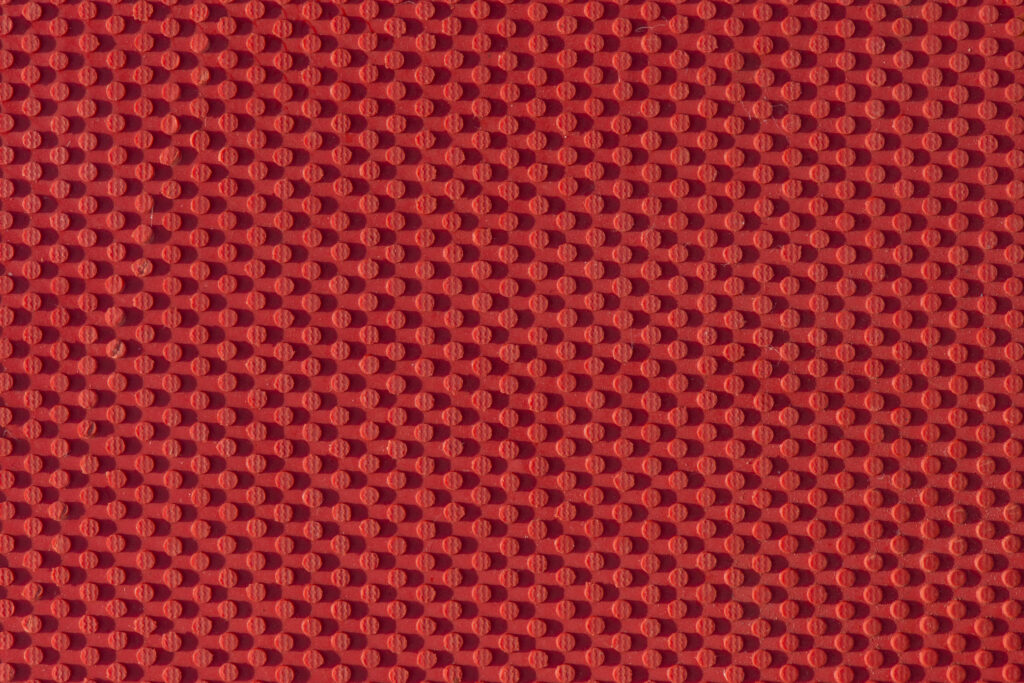Are you among thousands of people wondering why rubbers used for ping pong paddles are red and black instead of the same or even different colors? This is the right page for you!
New to ping pong and want to learn how to play? Learn more on that here.
When table tennis first started, you could use any color rubbers you wanted, even the same color on both sides. However, now, ping pong paddles utilize different types of rubber on each side that affect play, and the red and black colors on either side help the player differentiate which side they're using at a time. This has a huge impact on strategy and overall gameplay.
Read on to learn even more about the history of ping pong paddles, the different types of rubber, and how these differences can impact your game.
Why Are Ping Pong Paddles Red and Black?

Contents
The History of Ping Pong Paddles
Let’s first take a brief trip back in time to the early days of ping pong.
Millions of people all around the world have fallen in love with table tennis, commonly referred to as ping pong. Ping pong has an interesting and lengthy history, spanning from its modest origins as a parlor game in late 19th-century England to its development into an Olympic sport.
Ping pong’s inception dates back to the late 1800s in England when the higher classes played it as a recreational game. The game was called “whiff-whaff” and was played using basic paddles made of paper and cork, as well as a lightweight celluloid ball. Ping pong’s equipment and rules changed as the game gained popularity. The paddles became more advanced, enabling better control and accuracy, and the ball became lighter and more bouncy.
When hard racket paddles gained popularity in table tennis in the 1930s, rubber was first utilized in the sport. On top of the wooden blade, the rubber was composed of short projections. The 1950s saw the invention of sponge rackets. The rubber layer was covered in a layer of foam. More spin and speed are produced by the foam.
Up to 1986, players frequently used the same color. Since there is rubber on both sides of the paddle, opponents couldn’t tell which side the other was using. On July 1, 1986, the International Table Tennis Federation (ITTF) mandated that competition paddles have red rubber on one side and black rubber on the other—two years before table tennis was added as an Olympic sport.
Why Red and Black?
Rubbers of the same color were permitted during the early years of ping pong. However, players with different rubbers on either side took advantage of it as part of a strategy.
The primary reason for this is to help players distinguish the difference between the two rubbers because there are four different types of rubber: inverted, anti-spin, short pimples, and long pimples. Each of them generates a distinct type of spin.
With the rule implemented in 1986, a player using an inverted ping pong rubber for the black color and a long pimple for the red color, the opponent will be able to judge the ball’s characteristics and increase fairness across the game.
What Are the Differences Between Red and Black Rubbers?
For table tennis, black rubber is preferred for the forehand because it is tackier, produces more spin, and gives a greater feel for longer strokes. Red rubber is harder, expands more readily, feels thicker, is faster, less sticky, and has less spin than black rubber.
Some table tennis players prefer black rubbers for their forehand due to the extra tackiness. Black rubber is typically used on the backhand by Western players, whereas red rubber is typically used on the forehand. As a result, they are able to forehand hit the ball quicker than they would typically.
Players examine each other’s paddles before a match to make sure they adhere to the game’s laws and regulations. The purpose of the examination is to ensure that the rubber has not been harmed or altered in a way that would provide the player with an unfair advantage. An opponent cannot accurately determine whether the ball is being hit with the side of the bat that creates spin or not if the bat has the same color on both sides and one side has more grip than the other.
Additionally, the ITTF has approved the usage of pink, green, and blue rubber colors in addition to red and black. However, you can only use one of these colors if your other rubber is black.
Do Rubbers Have the Same Effects?
A few casual players contend that the differences between black and red rubber are purely aesthetic because they don’t play with much speed or spin, but many casual players are unaware of how the different sides of the paddle affect the ball.
But the answer is that red rubbers are usually a touch faster and create less spin than black rubbers since somewhat different materials (pigments and dyes) are utilized to give the rubbers their red and black colors.
You can play with more spin when using the softer black rubber, while the harder red rubber generates more speed. But for other players who play ping pong as a hobby, their rubber colors are solely based on their personal preference. You could choose either of the two colors for your forehand and backhand.

What Color Works Best for Forehand and Backhand?
For certain players, the only distinction between red and black rubbers is their color.
Chinese table tennis players typically use black on the forehand because the black rubber is tackier and helps the ball spin more when it hits the table. Although this is how Chinese players like to play, you are not required to follow their lead. Your table tennis paddle and preferred style of play will determine how you strike the ball. These trends changed over time: players preferred using red on their forehand in the 80s.
If you’re merely starting to play table tennis, it’d be better to focus your efforts on how the game is played. Then, develop the right style for you. After that, you’ll have to figure out whether to hit black or red on the forehand. Beginners shouldn’t focus too much on colors until they are more experienced.
It’s crucial to remember that there is some superstition associated with certain color selections. Trends in table tennis evolve over time, and people will copy top players’ moves without much consideration when they see them employing either color for different methods. However, it’s important to note, when playing in tournaments, that rubber colors must be accredited by the ITTF. So before buying your first paddle, you should read up on ping pong paddle regulations.
Inverted Rubber vs. Pimples
Have you ever thought about why some rubbers are smooth, and some are bumpy? Smooth rubbers are called inverted, and bumpy rubbers are called pimples.
Inverted rubbers are able to generate considerable spin because of their sticky surface. Excellent for players of all skill levels, from the most defensively inclined chopper to the all-out attacker. Inverted is the most versatile rubber type. Spin, speed, control, bounciness (springiness), and power are the primary attributes of smooth rubber. It works best for players who are attackers.
Unlike pimple rubber, inverted rubbers have a greater capacity to produce spin on the ball, making it more difficult for opponents to make a comeback. The ball is propelled faster and with an explosive burst of power thanks to the rubber’s springiness. Pimple rubbers work best for defense players.
All types of rubbers have their own pros and cons. It is up to the player to choose which type of rubber is ideal for them because the two have various qualities and impacts on the ball.
Types of Rubbers
Different brands of table tennis rubbers are available. Considering your playing style, talents, and budget will help you choose the right rubber. Here are the different types of rubbers and their advantages and disadvantages to help you choose the one that will work best for you.
Inverted
This is the common type of rubber. They are named inverted because the smooth side of the surface is exposed due to the rubber pimples, which are present on all top sheets and are oriented toward the rubber sponge. Additionally, inverted paddles are great for generating spin.
Advantages
- Excellent for all types of players, from the most defensively inclined chopper to the all-out attacker
- Produces a great deal of spin because of its sticky surface
Disadvantages
- There is nothing “tricky” with the inverted rubber, unlike pimpled rubber
- Degrades quickly and loses its characteristics
- Expensive
- Heavier paddle
Anti-Spin
Anti-spin looks like inverted rubber but has a “dead” sponge layer underneath an extremely smooth top sheet. The end product is a rubber sheet that works well for pace-changing, blocking, and returning serves.
Advantages
- Excellent at changing the pace, blocking, and returning serves
- Best for players who are having a hard time knowing the spin of the ball
- Great for setting up third ball attack
Disadvantages
- Can lead to a ball that can be easily attacked by your opponent
- Has no ball spin
- Heavier paddle

Short Pimples
An upside-down, inverted rubber sheet is called a short pip rubber. You can reduce part of your opponent’s spin off the ball by keeping space between your pimples.
Advantages
- Many tactics to confuse opponents
- Much less susceptible to incoming spin than standard inverted rubbers
- Less weight on the paddle
Disadvantages
- Challenging to elevate low balls and produce topspin
- Can lead to a ball that can be easily attacked by your opponent
- Mid-distance play
Long Pimples
Long pimple rubbers are made of the same materials as short pimple rubbers, but they have taller pimples. Players who rely on their opponents making mistakes are typically fans of rubbers with long pimples, or pips.
Advantages
- Beginner-friendly for backhand
- Slows down the game’s speed
- Able to short-range absorb the strength and spin of the current game
- Reverses the spin of the ball
- Budget-friendly
Disadvantages
- Cannot produce a lot of spin on their own
For beginners, you should choose a rubber depending on what type of player you want to become. Learn more about picking out a ping pong paddle here.
Final Note
If you only plan to play casually, it won’t really matter whether you choose black or red for your forehand or backhand. But if you are aiming for professional or even just tournament-level play, it’s critical to consider every aspect of rubber types and colors to determine which best suits your playing style. You should also learn all types of rubbers, not just the ones you’re using, because knowing what your opponent uses can help you prepare a dominating strategy.
